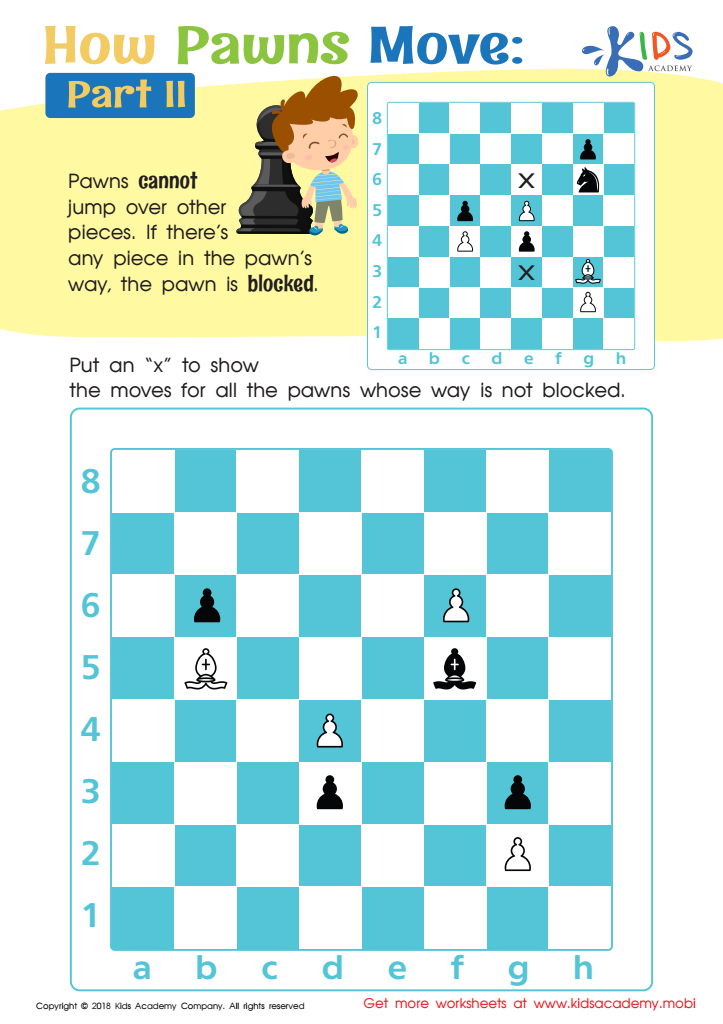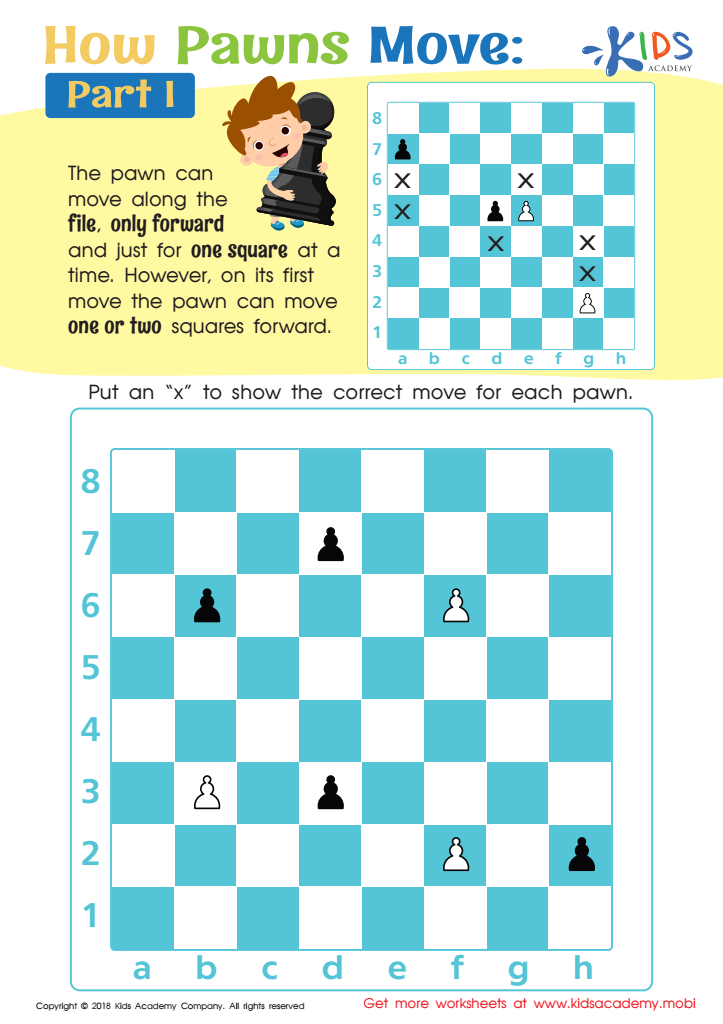Understanding pawn movement Worksheets for Kids
2 filtered results
-
From - To


How Pawns Move: Part II Worksheet


How Pawns Move: Part I Worksheet
Question/Answer
Why is the Understanding pawn movement skill important for Grade 1 students?
Understanding pawn movement is important for Grade 1 students because it helps develop critical thinking and problem-solving skills. Learning how these pieces move and capture on the chessboard introduces basic strategy and planning, encourages patience, and improves concentration. These cognitive skills are beneficial not only in playing chess but also in academic studies and everyday decision-making.
How to train the Understanding pawn movement skill in Grade 1 students learning about Chess?
To train Grade 1 students in understanding pawn movement in chess, start with simple, interactive exercises. Use a chessboard to demonstrate how pawns move one square forward, except on their first move when they can move two squares. Incorporate playful activities, such as letting each student move a pawn on a board, to reinforce the concept.
How to test a Grade 1 student’s Understanding pawn movement skills?
To test a Grade 1 student's understanding of pawn movement skills in chess, set up a chessboard and ask the student to correctly move a pawn from its starting position. Include scenarios like moving a pawn two squares forward from its starting position, capturing diagonally, and en passant.
 Assign to the classroom
Assign to the classroom











